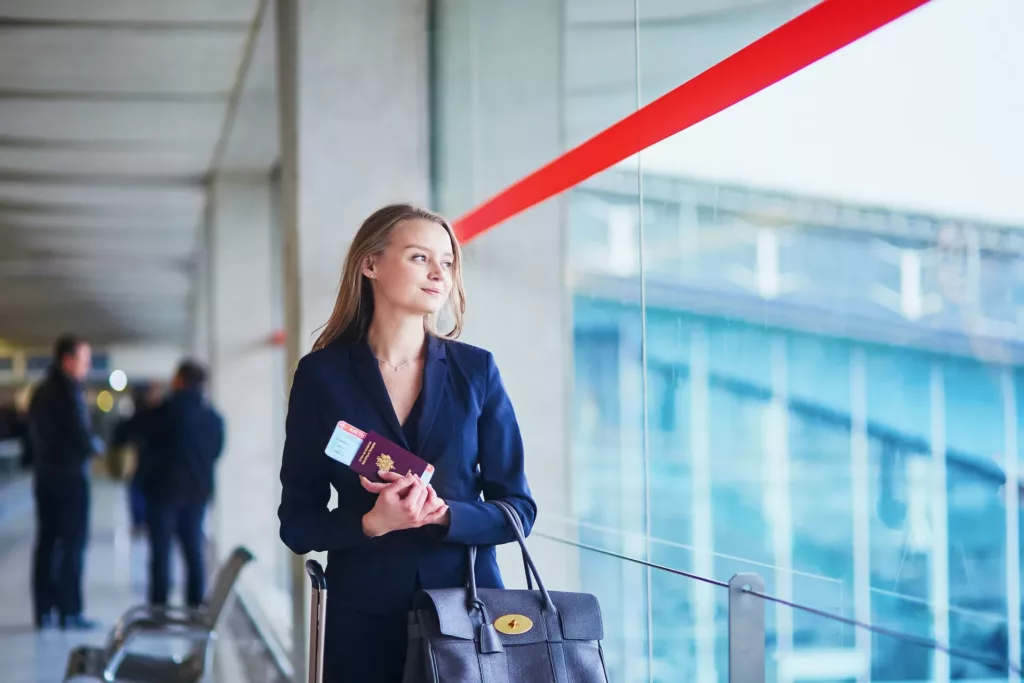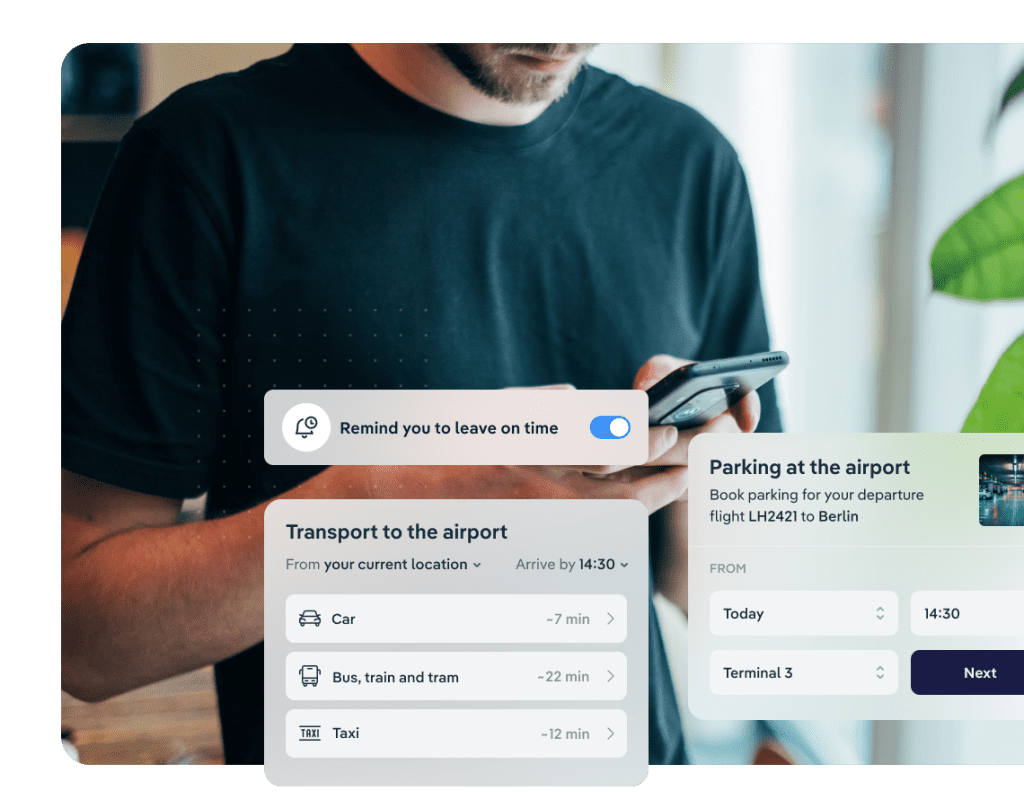In 2024, airports stand at the cusp of a transformative opportunity with virtual interlining, a concept that’s reshaping how global networks are built and utilized.
Unshackled from traditional codeshare agreements with cumbersome and expensive airline partnerships, virtual interlining is a not just a good idea for airports – it should largely be seen as a value-add no-brainer in the ever-changing scope of airport travel, where passengers frequently require flight hops to small and large airports across the world and naturally expect their bags to make it through the journey with them.
Why Strategic Expansion through Connectivity is the Key to Airport Success
Unlike traditional interlining, which requires formal agreements between airlines to share flights and passengers, virtual interlining leverages digital technology to seamlessly connect flights from different carriers without the need for such agreements.
This innovation opens the door to an array of benefits, most notably the ability to attract a broader spectrum of airlines and travelers seeking flexible and efficient travel options. That’s a good thing.
Virtual Interlining (VI) literally opens up parts of the globe that were once deemed ‘too far off the beaten track’. Airports live and die by innovation, so why should VI be treated any differently? Airports should not feel constrained by geography. The technology is here and it’s already making waves in the aviation world.
Building Global Networks: Why VI Works Better Than Traditional Alliances
The essence of virtual interlining lies in its capacity to create a global network that surpasses the limitations of existing airline alliances.
By facilitating easier connections between airlines, airports can dramatically enhance their appeal as travel hubs. This not only increases the volume of carriers operating through the airport but also positions it as a preferred choice for international travelers.
The broader the network, the more attractive the airport becomes, fostering an environment ripe for growth and expansion.

Partnerships for Progress
The implementation of virtual interlining is made possible through strategic partnerships with technology providers like Airsiders.
These alliances are foundational, enabling airports to integrate sophisticated digital systems that manage the complexities of connecting passengers and their luggage across different airlines.
Such collaboration not only simplifies operational challenges but also acts as a catalyst for digital transformation within the airport ecosystem.
How to Achieve Revenue Growth via Increased Passenger Volume
With the influx of passengers facilitated by enhanced connectivity, airports find themselves in a prime position to capitalize on ancillary revenue streams. The following should be considered by airport operators in the consideration of a virtual interlining technology:
– Leverage Ancillary Services
The key here is diversification—expanding retail, dining, and other services to cater to the unique needs of transit passengers.
From luxury shopping experiences to gourmet dining options, the goal is to create an environment where passengers are encouraged to spend more time and money.
– Create Efficient Use of Airport Resources
Virtual interlining also promotes the efficient use of airport resources. By optimizing the scheduling and management of gates, lounges, and baggage systems, airports can handle the increased passenger flow without compromising on service quality.
This efficiency not only reduces operational costs but also contributes significantly to the airport’s profitability.
– Embrace Automation
Automated baggage systems, biometric boarding processes, and digital navigation aids are just a few examples of how technology can streamline operations and enhance the passenger experience.
For airports embracing virtual interlining, these innovations are not just beneficial; they are essential for managing the complexities and volumes that come with it.
– Use Data Analytics to Help Guide Strategic Decisions
In an era where data is king, airports can leverage analytics to make informed decisions about infrastructure investments and service enhancements.
Understanding patterns in travel behavior, passenger preferences, and operational bottlenecks allows for a strategic approach to development, ensuring that airports remain agile and responsive to the needs of both airlines and travelers.
– Enhance Sustainability via Operational Efficiency
Sustainability is a critical consideration for the modern airport. Virtual interlining contributes to this goal by optimizing flight connections, thereby reducing unnecessary layovers and the associated carbon emissions.
Beyond the air, airports are investing in sustainable infrastructure—think renewable energy sources and electric ground handling equipment—to further reduce their environmental impact.

Elevating the Passenger Experience
At the heart of virtual interlining is the promise of a seamless travel experience. By reducing the stress and uncertainty associated with transfers, airports can significantly improve passenger satisfaction.
This is further enhanced by digital services that provide real-time information, helping passengers navigate through the airport with ease. Personalization plays a crucial role here, with tailored services and experiences designed to meet the unique needs of each traveler.
VI: A smarter direction for Airports
Virtual interlining stands as a beacon of innovation for airports, offering a pathway to increased connectivity, revenue growth, and operational efficiency.
By embracing this model, airports can not only enhance their value proposition to airlines and passengers but also position themselves as leaders in the evolving landscape of air travel.

The 10 Main Takeaways to Keep in Mind
As this article has laid out, there are a number of important factors at play when we consider the importance and impact of VI on airport operations:
1.Build Global Networks
– VI facilitates connections across various airlines, including non-alliance members.
– VI attracts more carriers and international travelers seeking flexible routes.
2. Create Partnerships for Progress
– Essential for digital infrastructure support.
– Streamlines passenger and baggage transfers across carriers.
3. Leverage More Ancillary Services
– Diversify retail and dining to boost non-aeronautical revenue.
– Introduce services tailored to transit passenger needs.
4. Ensure Efficient Use of Airport Resources
– Optimize gates, lounges, and baggage systems.
– Enhance operational efficiency and reduce costs.
5. Innovation for Future Readiness via Automation
– Automated technologies for baggage and boarding processes.
– Essential for managing increased flow from virtual interlining.
6. Data Analytics for Strategic Decisions
– Guide infrastructure investments and service enhancements.
– Ensure adaptability and competitiveness.
7. Enhance Sustainability and Operational Efficiency with Sustainable Practices
– Promote direct connections and reduced layovers for fuel efficiency.
– Invest in green technologies and sustainable infrastructure.
8. Community and Environmental Advantages
– Support global sustainability objectives.
– Enhance the airport’s reputation among eco-conscious stakeholders.
9. Streamlining the Journey
– Virtual interlining for smoother transfers.
– Comprehensive digital services for real-time information.
10. Personalization at Every Step
– Analyze passenger data for tailored services.
– Enhance satisfaction and encourage loyalty.
Can we help?
If you want to speak to one of our experts in Virtual Interlining tech, we would be happy to show you how you can transform your airport into a global connection hub. Contact us here.
In today’s hyper-paced digital world, airports are not just transit points but (potentially) hubs of technological innovation. This article delves into how digital advancements are optimizing the airport experience, from automated check-ins to advanced security measures.
We’ll explore case studies from leading airports like Singapore Changi, Amsterdam, Dubai and Rome, highlighting how these digital solutions not only enhance passenger experience but also streamline operations. Understanding these transformations is crucial for anyone in the aviation industry aiming to stay ahead in an era where efficiency, security, and passenger satisfaction are paramount.

Challenges across the Airport Journey
The airport experience, often a blend of excitement and anxiety, presents numerous challenges for passengers. These challenges, while varying in intensity, collectively impact the passenger experience and the ability for airports to improve revenues. Addressing each of the following stress indicators through digital innovation can significantly enhance the overall journey.
Let’s take a closer look at some of the key stress points for airport passengers:
Check-in and Baggage Drop:
- Long queues and uncertainty about baggage rules can cause significant stress. Passengers often worry about extra fees, baggage weight limits, and the time it takes to check in.
Security Screening:
- Security checks, while crucial for safety, can be a source of anxiety. The process can be slow, and the rules can be confusing, leading to delays and frustration.
Finding Gates and Facilities:
- Navigating a busy airport can be overwhelming, especially for first-time or infrequent flyers. Difficulty in finding gates, restrooms, or dining options adds to the stress.
Flight Delays and Cancellations:
- Uncertainty regarding flight schedules, often due to factors beyond control, can lead to anxiety and discomfort.
Boarding Process:
- The boarding process can be chaotic, with passengers often confused about boarding groups, priority access, and gate changes.

Digital Solutions to Airport Challenges
Digital technology offers innovative solutions to the challenges in airports:
- Automated Check-in and Baggage Drop: Self-service kiosks and mobile check-in apps reduce waiting times and streamline the check-in process. Smart baggage solutions, like electronic tags, ensure efficient and accurate handling.
- Advanced Security Screening: Biometric screening and advanced scanning technologies speed up security checks while maintaining high safety standards.
- Interactive Wayfinding: Digital maps and mobile apps guide passengers through the airport, providing real-time information on gates, facilities, and walking times.
- Real-Time Flight Information: Digital displays and mobile notifications keep passengers updated on flight changes, reducing uncertainty and stress.
- Efficient Boarding Processes: Digital boarding solutions, such as e-boarding passes and organized boarding notifications, simplify the boarding experience.
Implementing these digital solutions can significantly reduce the stress points in the airport journey, leading to a more pleasant and efficient experience for travelers.

Enhancing Key Stages of Airport Experience
Digital innovations significantly enhance various stages of the airport experience:
- Arrival and Check-in: Automated check-in kiosks and online check-in options offer convenience and reduce wait times. Smart baggage systems make baggage drop-off smoother and more reliable.
- Security Screening: Biometric authentication and advanced scanning technologies streamline the security process, reducing wait times and enhancing security.
- Navigating the Airport: Interactive digital signage and mobile apps provide real-time directions, gate information, and updates on amenities, helping passengers navigate the airport with ease.
- Waiting and Boarding: Digital solutions in waiting areas, like real-time flight information screens and boarding alerts on mobile apps, ensure passengers are well-informed and prepared for boarding.
- Post-Flight Services: Digital platforms can assist with post-flight needs, such as ground transportation and lost baggage tracking, improving the end-to-end journey.
By integrating these digital solutions, airports can create a seamless, stress-free experience for passengers at every stage of their journey.

Case Studies: Airports Embracing Digital Transformation
Real-World Applications of Digital Solutions in Airports
Case studies offer invaluable insights into the practical application and impact of digital solutions in airport settings. They demonstrate how innovative technologies are addressing real challenges, enhancing passenger experiences, and improving operational efficiency.
These real-world examples serve as a testament to the transformative power of digitalization in the aviation industry and provide a roadmap for future advancements.
1. Amsterdam Schiphol Airport: Enhancing Navigation and Communication
Amsterdam Schiphol Airport has taken significant strides in improving passenger experiences through digital innovation. A key development is their Passenger Experience Platform, accessible via interactive self-service kiosks and mobile devices. This platform provides crucial flight information, aids in wayfinding, and offers personal assistance, streamlining the customer support process.
The introduction of the Self-Service Unit (SSU) in 2018 further revolutionized the passenger experience. These kiosks, combining sleek design and user-friendly software, allow travelers to access a range of services, from checking flight information to video calls with airport assistants. This initiative, central to Schiphol’s service strategy, contributed to the airport winning the Skytrax Best Digital Services Award in 2023. Schiphol’s continuous focus on digital transformation, including overhauling digital channels in collaboration with Edenspiekermann, underscores its commitment to enhancing the complete passenger journey.
For more information about Schiphol’s digital innovations, visit their official website here and here.
Key takeaways:
- Pivot to digital wayfinding and communication
- Collaborative digital strategy
- Future-focused digital initiatives
2. Dubai International Airport: Advancing Security with Smart Technology
Dubai International Airport, renowned for its high volume of international travel, has implemented advanced security measures to ensure both travel and health safety. The airport introduced iris scanning as a key security feature. This AI-powered technology facilitates rapid, contactless identity verification, ideal in the context of the COVID-19 pandemic.
The introduction of Smiths Detection’s HI-SCAN 6040 CTiX checkpoint scanner further underscores Dubai’s commitment to enhanced security. This state-of-the-art scanner, which speeds up the security check process by eliminating the need to remove electronics and liquids from hand luggage, is an example of how the airport is integrating advanced technology to streamline operations and improve passenger experiences.
Dubai International Airport’s focus on smart technology, including the integration of data with Emirates and the Dubai immigration office, is a testament to its goal of becoming a world leader in airport security and efficiency.
For a deeper look into Dubai International Airport’s security technologies, you can explore further on IoT Tech Trends here and Times Aerospace here.
Key takeaways:
- Advanced security technologies
- Smarter security management
- Technological leadership and vision from management
3. Singapore Changi Airport: Pioneering Digital Wayfinding for Enhanced Passenger Experiences
Singapore Changi Airport’s digital transformation exemplifies how technology can enhance airport operations and the passenger experience. A key initiative in this transformation is the DIVA (Digital, Innovation, Ventures & Analytics) program. This program has been instrumental in developing innovative digital solutions like the Safe Travel Concierge app, which provides a one-stop portal for passengers’ travel needs, and the ChangiQ app, a queue management platform.
Additionally, Where2Clean, an app leveraging IoT and real-time data, helps in efficiently managing cleaning operations. These innovations contributed to Changi winning the IDC’s 2021 Future Enterprise Awards for Digital Resiliency. To learn more about Changi Airport’s DIVA initiative and its impact, you can read more about it on Changi Airport’s official page.
Furthermore, Changi Airport’s Terminal 2 showcases state-of-the-art digital installations, including The Wonderfall, a four-story digital waterfall, and The Dreamscape, an immersive garden under a dynamic digital sky. These features not only beautify the airport but also create interactive and engaging environments for passengers.
These case studies from Changi Airport demonstrate the impactful role of digital technology in enhancing airport operations and passenger experiences.
Key Takeaways:
- Digital innovation roadmap
- Important operational impact
- Strong digital future outlook
4. Rome Airport’s Wayfinding Transformation: Navigating the Future with Airsiders
Rome Airport’s collaboration with Airsiders exemplifies how digital wayfinding solutions are revolutionizing the post-booking airport experience. This partnership, highlighted in our eBook (download on the link to learn more), showcases the strategic importance of enhancing passenger navigation for modern airports.
The Impact of Digital Wayfinding Solutions
- Enhanced Passenger Experience: Airsiders’ technology at Rome Airport created a more intuitive journey, reducing stress and confusion. This aligns with the broader aviation industry’s goal of creating a digitally-coordinated environment for a seamless travel experience.
- Operational Efficiency: The implementation of digital wayfinding not only improved the passenger experience but also boosted the airport’s operational efficiency. It effectively reduced congestion and optimized the use of facilities.
- Valuable Data Insights: The real-time data on passenger flow gathered through this technology enabled better resource management. This insight allows for more informed decisions regarding staffing, security, and overall airport management.
The Rome Airport case study is a prime example of how digital solutions like wayfinding technologies can address immediate passenger challenges while offering long-term operational and commercial benefits. It’s a testament to the potential of strategic partnerships in the aviation industry to drive digitalization and enhance both the passenger experience and airport operations.
For more detailed insights into this case study, you can refer to the eBook. This example underlines the industry’s shift towards integrating digital solutions to create more efficient, enjoyable, and streamlined travel experiences.
Key takeaways:
- Enhancing passenger navigation
- Increased operational efficiency and advanced data insights
- Long-term benefits for airport and passengers

Future of Airports: Digital Innovations on the Horizon
The future of airports lies in continuous digital innovation. Here are some of the more likely technologies to have profound change on airports over the next 5 – 10 years.
- Artificial Intelligence (AI) and Machine Learning: AI will further personalize the passenger experience, predicting individual needs and offering tailored recommendations.
- Augmented Reality (AR) for Navigation: AR technology could provide interactive, 3D navigational aids within airport apps, making wayfinding even more intuitive.
- Advanced Biometrics: Enhanced biometric systems will enable even smoother and faster processing at various stages, from check-in to boarding.
- Internet of Things (IoT) Integration: IoT can streamline operations, from baggage handling to environmental monitoring, ensuring a more efficient airport ecosystem.
- Sustainable and Smart Infrastructure: Emphasis on sustainability will drive airports to adopt smart, eco-friendly technologies.
These innovations promise to make the airport experience more efficient, enjoyable, and sustainable for passengers.
Importantly, digital transformation in airports is more than just a trend – it’s reshaping how we travel. With the rollout of automated systems, biometric security, and real-time digital updates, today’s airports are turning these high-tech solutions into essential tools. These innovations are key to making airport experiences smoother and more enjoyable for everyone.
Looking forward, AI, AR, and IoT integration point towards a future where airport operations are more efficient, passenger-friendly, and sustainable. As airports continue to evolve, these digital advancements will play a pivotal role in reshaping the journey from booking to boarding, ensuring a smoother, more enjoyable travel experience for all.

Want to know more? We Empower Airports through Digital Innovation
Airsiders is dedicated to reshaping the future of air travel by integrating advanced digital solutions into the heart of airport operations. Our expertise lies in developing intuitive systems that enhance passenger experiences and streamline airport efficiency. By seamlessly connecting airlines, hubs, and travel services, we provide passengers with the tools they need for a smoother journey.
Based in Berlin, Europe’s tech hub, Airsiders brings a unique blend of innovation and practicality to the aviation industry. Our solutions are designed to transform the way airports and airlines interact with their passengers, fostering an environment of connectivity, efficiency, and satisfaction.
If you’re looking to elevate your airport’s passenger experience, please reach out to one of our team members. We’re here to discuss how we can enhance your airport’s digital footprint and transform the travel experience for passengers around the globe.
Introduction: The Power and Potential of Regional Airports
Regional airports, often overshadowed by their larger counterparts, serve as vital connections for many Europeans. These hubs are essential for residents in peripheral areas, fostering economic growth and providing pivotal links for businesses and families alike.
However, they’re not without challenges. The growth of these airports has been stymied, largely due to the operational limitations posed by carrier restrictions. This is where the power of virtual interlining enters the fray.
The State of European Regional Airports
While regional airports cater primarily to low-cost or regional carriers operating seasonal routes to leisure destinations. When it comes to low cost carriers, their main limitation is the absence of interline agreements. This absence can sometimes create a ripple effect across other airline operations at regional airports and compounds the need for virtual interlining.
Limited Direct Connectivity
For destinations not served by these airports, passengers must often resort to ground transportation to larger hub airports, resulting in longer, more convoluted travel itineraries.
Inconvenient Scheduling: The infrequency of some routes means travelers often cannot find roundtrip options on their preferred dates, pushing them towards larger hubs.
These challenges invariably affect profitability and the broader growth trajectory for regional airports.
Decoding Virtual Interlining
Once an obscure industry term, virtual interlining is now gaining traction. Here’s a simple breakdown:
What is it? OTAs, over the past decade, have popularized the concept of combining flights from carriers without interline agreements, offering passengers cohesive transfer or roundtrip itineraries.
The Benefit? This strategy can significantly enhance the connectivity of regional airports, offering passengers increased flexibility ” with one -stop to reach the world” from your home airport, in turn, augmenting airport growth.

Strategizing Virtual Interlining: The Extended 4Ps Approach
1. Product
We delve deeper into the benefits and list a few ways how airports can optimize their approach to virtual interlining:
Roundtrips: Beyond offering additional services like fast-track or lounge access, regional airports can consider partnerships with nearby hotels or tourist attractions, creating bundled deals that enhance traveler experience.
Mix & Match: Existing carriers can adopt an mix and match approach to their routes via single leg virtual interlining for example.
Transfers: Beyond the through-check of luggage between non-interlined carriers, consider initiatives like dedicated transfer desks or express security checks for passengers with tight connections.
2. Price
Exploring pricing dynamics:
Carriers: Establish a tiered incentive system where carriers that achieve certain virtual interlining booking thresholds receive progressively higher discounts on aviation fees.
Passengers: Create a loyalty program offering discounts or rewards for passengers who frequently book virtual interlining flights via specific OTAs.
3. Place
Broaden the distribution channels:
Local Travel Agencies: Organize workshops and training programs, ensuring travel agents are well-versed in the benefits and processes of virtual interlining.
Airport Websites: Integrate interactive tools and widgets that educate travelers on the benefits of virtual interlining, enhancing their booking experience.
Airline Websites: Explore collaborations where airlines’ marketing materials highlight the benefits of virtual interlining, leading to informed decisions by passengers.
4. Promotion
Direct Marketing: Use targeted email campaigns, leveraging analytics to tailor promotions to frequent travelers or those previously interested in destinations not directly served by the regional airport.
Reinforce promotion strategies:
Local Influencers: Identify and partner with micro-influencers who have a niche, engaged audience that matches the airport’s target demographic.
Traditional Methods: Organize community engagement events or roadshows, creating a direct dialogue with potential travelers.
The Bigger Picture: Virtual Interlining’s Long-term Impact
Virtual interlining doesn’t merely present an immediate solution; it promises a transformative impact on the regional aviation landscape in Europe. As regional airports embrace this, they:
Enhance Passenger Experience: Seamless connections, reduced travel times, and added services mean happier travelers.
Boost Profitability: More bookings directly translate to higher revenues.
Promote Sustainability: By reducing the need for ground transportation to larger hubs, virtual interlining can contribute to decreased carbon emissions.
We can help
Embracing innovation is not a luxury but a necessity for regional airports in Europe. With virtual interlining, these airports have a golden opportunity to redefine their operational landscape, promising growth, enhanced passenger experiences, and a brighter future.
Airsiders can help your regional airport take the first steps towards interlining. Get in contact with us to see what is possible.
In a world that is rapidly advancing with innovative technologies at its core, the travel industry is undergoing a radical transformation. Airports, which once solely stood as physical landmarks for travel transitions, are now emerging as pivotal nodes in the digital ecosystem of the travel experience. One such revolution in enhancing the traveller experience is the ‘Door-to-Gate’ concept.
The Pre-travel Passenger Engagement Dilemma
Currently, airports have a conundrum. Their myriad of services and offers remain, for the most part, unseen by passengers until they physically arrive at the airport. Up until that moment, it’s predominantly the airlines or travel platforms through which passengers have made bookings that stay in constant touch. Airports, though bustling with options, often remain a silent partner.
Travellers today have an array of concerns before they even reach the airport. For first-time travellers or visitors, the common queries include:
- “When should I leave for the airport?”
- “Which transport method would get me there the fastest?”
- “How long will it take for me to navigate through the airport?”
- “Where can I find good food options once I’m there?”
While a quest for answers might direct them to the airport website, the information they get isn’t personalized. It’s a generic overview. This impersonal interaction not only leaves many questions unanswered but also means they are less likely to revisit the airport’s digital platforms.

Painting the Ideal Picture
Imagine a digital platform where a traveller can get answers tailored precisely for them. This platform would function as follows:
- Personalised Flight Itinerary: Passengers would key in details of their specific flight, adding nuances like whether they need to check-in, if they’re carrying luggage, and even specifics like restricted mobility.
- Visual Journey Preview: They would then receive an interactive map showing them a bird’s eye view of their entire journey. From walking paths within the airport to estimated processing times at various checkpoints, passengers would get a complete picture.
- Tailored Transport Recommendations: By simply adding their departure address, passengers would receive transport suggestions best aligned with their flight time and personal preferences.
- Customized Airport Offers: Depending on their flight details and the destination, travellers would receive offers ranging from discounts at airport eateries to exclusive lounge access.
- Inbound Assistance: This tool isn’t just for those leaving the city. Incoming passengers can input their destination in the city, and the platform would advise on the best transport methods, coupled with expected processing times at the airport.
Benefits Beyond Passenger Convenience
While this might seem like a tool designed for the convenience of the passengers, the implications for airports are profound:
- Early Passenger Engagement: The platform would allow airports to engage passengers before their actual travel date. Early engagement means better service visibility and potentially higher conversions.
- Contextual Promotion: Services like parking, fast-tracking, and more could be promoted based on the passenger’s exact journey details. This contextual approach can significantly enhance conversion rates.
- New Revenue Streams: Airports could tap into affiliate marketing, integrating offers from transport services or third-party companies into the platform. Each click, each purchase from these third-party offers could mean a commission for the airport.
- Wider Reach through Integration: Since this would be web-based, integration with airline websites and travel platforms could be seamless. The more the platform is promoted post-booking, the higher the engagement rates.
The Future is Here with Airsiders Webapp
This might sound like a traveller’s utopian dream, but the future is already here. Enter the Airsiders Webapp. Crafted meticulously, keeping in mind the complex needs of airports, airlines, and travellers, the Airsiders Webapp is changing the face of pre-travel engagement.
With a plug-and-play design, it offers adaptability to the unique brand personalities of different airports. It’s not just a tool; it’s a comprehensive solution that promises a complete transformation in how airports interact with their passengers.
Moreover, with the potential to be set up in a matter of weeks, it represents a swift transition to the future, without the teething troubles of traditional digital transformations.

Wrapping Up
The door-to-gate concept isn’t just a digital tool; it’s a paradigm shift in the travel experience. By bridging the gap between passengers and airports in the pre-travel phase, it promises a smoother, more informed journey for travellers and a plethora of commercial opportunities for airports.
Are you an airport, an airline, or a travel platform keen on being at the forefront of this revolution? It might be time to explore the Airsiders Webapp. Dive into the future, today.
Interested in learning more? Reach out to Airsiders.
We’re entering the era of self-connecting travel. According to data we’ve observed, self-connecting flights have grown fourfold within the past year. These self-connecting passengers, or ‘travel hackers,’ book two or more connecting flights independently from each other with airlines that don’t have interlining agreements in place. They’re willing to take the risks and downsides that come with it in exchange for more flexibility and more choice around flight times, prices and destinations. Above all, they are looking to save money and time.
So, what can airports do to get on board and reap the full benefits of this latest travel trend? Let’s first take a look at the obstacles for self-connecting passengers, then discover how airports play a role in creating a seamless self-connected travel experience.
Challenges for self-connecting passengers
For many travellers, the very idea of the self-connection process is anxiety-inducing. Air travel can be stressful enough without the addition of making your own connections, which brings plenty of challenges.
A lack of information is central to the anxiety around self-connecting flights. Without a clear idea of minimum time needed between flight transfers, door-to-gate distances, risk factors in terms of delays etc., passengers are left with the feeling that they are taking a major gamble – or worse, they may decide to stay away from booking altogether.
Another major pain point is the need to re-check and reclaim baggage with every connection. Endless luggage queues are enough to put many would-be self-connecting travellers off. The time lost when re-checking and reclaiming luggage is vital, as is the time lost from flight delays. For a self-connecting passenger, every minute counts – the longer the delay, the more likely they are to miss a connecting flight. And if passengers miss flights, they run the risk of being stranded and having to scramble to re-book tickets themselves, likely without a refund.
Even if travellers do like the idea of making their own connecting flights, it’s often hard to know where to start and the whole process can seem daunting. Questions over where to go upon arrival at the airport, when and where to check-in and what to do if a delay causes them to miss a connection all create a feeling of uncertainty.
All these factors combine to create confusion, worry and wasted time for travellers when they should be free to spend their time dining, shopping or simply relaxing in between flights.
How Airports can provide more transparency for self-connecting passengers
As an essential part of any connected journey, airports play a key role when it comes to the self-connecting passenger’s journey. Airports have the opportunity to shape the self-connection process and alleviate pain points, while building strong customer relationships, increasing revenue and providing a truly connected travel experience.
This is where Airsiders comes in.
As the travel industry’s first genuine door-to-gate and virtual interlining solution, we bring the products and processes to bridge the gaps across all stages of the passenger journey.
Airsiders’ Door-to-Gate – a standardised airport map & itinerary builder
Airsiders’ Door-to-Gate aggregates specialised data feeds from airports all over the world to improve the self-connecting passenger journey and build a trusting relationship between the airport and the traveller.
It all starts with journey times. Using our extensive airport map database, we accurately predict the time it would take for a passenger to go from door to gate at any transfer airport in the world. Our maps are standardised and integrated with flight schedules, passenger itineraries and operational data. We also use specialised global data to calculate risk scores for transfer flights, bringing added peace of mind and encouraging passengers to book connecting flights.
All this enables airports to increase passenger flow by predicting and visualising passenger journeys, offer personalised guidance for travellers, manage data and analytics in real-time, and integrate custom data. The bottom line? An increase in revenue, cost reduction and a seamless, personalised travel experience for self-connecting passengers.
Best of all – our solution can be implemented in the way that works best for your airport. Either as a standard API that easily integrates into your passenger-facing platform Volario Go or as a white-label tool, enabling you to use it in-house with your own branding.
Virtual interlining – a seamless self-connecting solution
Yes, travel hacking comes with plenty of baggage, but, having collaborated with BEUMER Group, a global leader in baggage handling systems, we’ve got the fundamentals of luggage checks in the bag. Our software and automated processes make luggage through-checks a breeze, even when an interline or alliance agreement doesn’t exist between flight handlers. We also take the edge off flight disruptions, with a connection guarantee that makes sure passengers are rebooked in the event they miss a flight.
All in all, an improved self-connecting traveller experience means more airport passenger traffic and happier customers which, ultimately, translate in increased revenue and customer loyalty.
Airsiders is already helping airports, airlines and travel tech companies provide a standardised travel experience. To discover how we can help your team today, book a demo now.